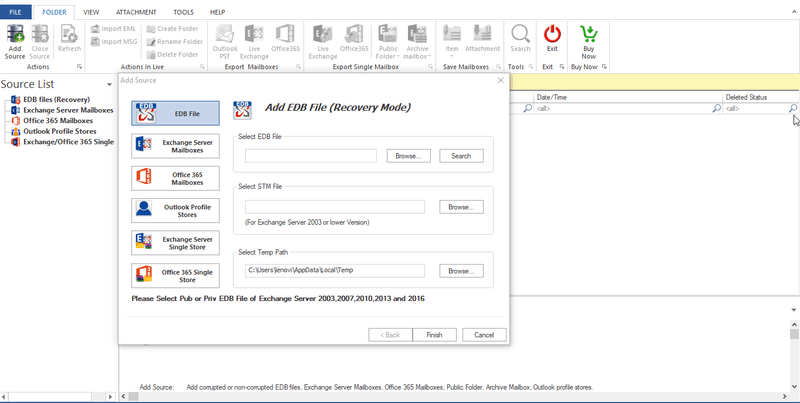As many of us know, the Exchange Server uses EDB as the file format to keep all of the mailbox data. This would help you to appreciate the relevance of EDB files, which comprise the whole mailbox data. Exchange Administrators often store a backup copy of the EDB formatted user mailbox data.
Still, most users decide to export the data from the EDB file first whenever PST style access to it is needed. This is thus because the most information in the EDB file. It is tough to find a trustworthy solution though since the EDB file includes sensitive and important data you cannot afford to compromise.
Different techniques for EDB formatting PST files
There are several ways to finish this work; all of them are covered in the part following. Still, since one error could cause data loss, first make sure a current backup of the EDB file is generated before deciding on any one approach. Every option has benefits as well as drawbacks.
Let's use these particular guidelines to fully grasp every approach:
Exporting EDB to PST starts with using the Exchange Admin Center (EAC).
Already a necessary feature of Microsoft Exchange servers is the Exchange Admin center. An Exchange administrator can export any data kept in EDB into PST format with this tool. Learn the actions that must be done.
• You have to log in using an Exchange Admin account first to access EAC.
• Go to the user mailboxes part after first arriving at the recipients part.
• From the drop-down option, chose the mailboxes from EDB to PST file you wish to export.
• Click the More button to export to a PST file under Export to....
• Use the search path and the user interface rules to store the created PST file.
• Shell for Exchange Management allows managers to carry out commands. Export the information following the procedures:
Export the EDB with the application into the PST.
Direct data extraction from the EDB file is not feasible without a Live Exchange Server environment in the surroundings. Even with an Exchange Server set-up, the work is somewhat time-consuming and challenging.
As a result, the widely regarded as most valuable product—the EDB to PST converter—helps you to speed up and simplify your work. Exchange managers who lack a lot of time to personally carry out the activity first use this tool. Apart from this, the tool removes the restrictions and problems connected to the manually running system.
Exporting benefits from this technology, which uses few resources and the lowest feasible time span. Apart from keeping an eye on server performance, the program gathers data from several EDB files and emails and converts them into PST format.
This is a quick overview of the operation of this instrument.
• Download and install the EDB to PST converter on your own Windows-running PC to get going.
• To load the EDB file into the tool in the second step you must click the Add File button.
• Review every single EDB mailbox data item shown on the panel next-wise.
• Choose the PST option to extract the EDB mailbox into the PST structure when in Step 4.
• To pick the designated folder, first click the Export option; next, select the Browse button.
• At end, the PST format will have every bit of the data from your offline Exchange EDB file.
Furthermore, users of Exchange Server may retrieve deleted emails without running across any problems during the procedure.
The last decision
Reading this article will provide all the necessary knowledge to grasp how a user may export a mailbox from an EDB file into a PST file. This is the perfect post for you to peruse if you also wish to examine an EDB file in Outlook or save as a backup copy. Here is the most efficient way to access the contents of the whole mailbox from EDB files without losing any data.







Top comments (0)